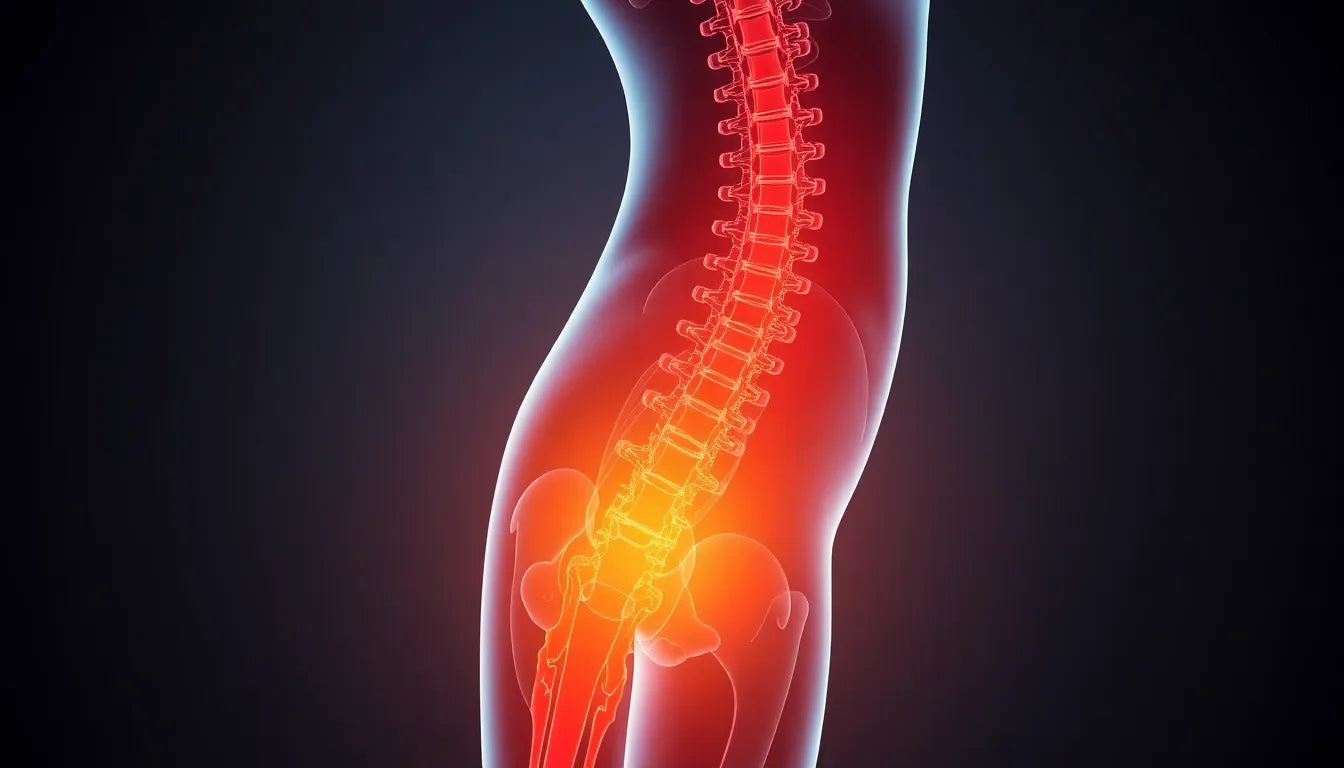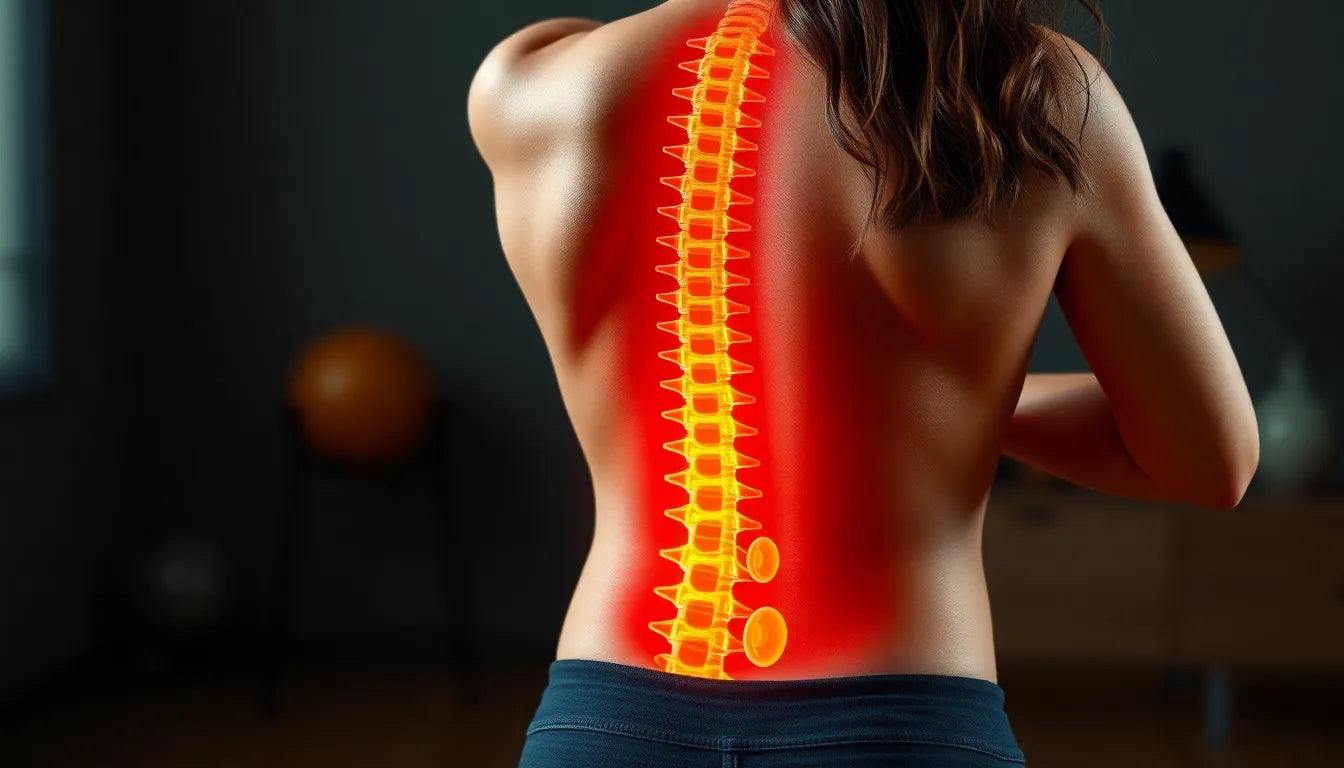Sudden back pain can strike without warning, often leaving individuals grappling with discomfort and limited mobility. One of the most common manifestations of this issue is what many refer to as a "thrown out back." This non-medical term describes acute lower back pain that typically arises after specific activities or movements, such as lifting, twisting, or overexertion. Despite its alarming nature, this condition is prevalent, affecting a significant portion of the population at some point in their lives.
Understanding sudden back pain
The concept of a thrown out back is rooted in the sudden onset of pain, usually resulting from a muscle strain or ligament sprain in the lower back. This can occur during everyday activities like picking up a heavy object, twisting awkwardly, or even from poor posture over time. The abruptness of this pain can be startling, often catching individuals off guard and disrupting their daily routines.
While the term "thrown out back" might sound severe, it is crucial to understand that most cases are related to soft tissue injuries. These injuries, although painful, are typically not serious and can resolve with proper care. The body’s natural healing processes, combined with appropriate management strategies, often lead to recovery within days to weeks.
Why it matters
The impact of sudden back pain extends beyond physical discomfort. It can significantly affect one's quality of life, hindering the ability to perform daily tasks, enjoy leisure activities, or even maintain a regular work schedule. The sudden onset of pain can lead to frustration and anxiety, especially if the individual is unsure of the cause or how to manage it effectively.
However, it’s important to note that while this condition can be disruptive, the majority of cases involve soft tissue injuries that are self-limiting. With the right approach, including rest, gentle activity, and home remedies, most individuals see improvement without the need for extensive medical intervention. Understanding the nature of a thrown out back and knowing how to handle it can empower individuals to manage their symptoms effectively and return to their normal activities with confidence.
In summary, a thrown out back is a common issue that many people will face at some point. Recognizing the symptoms and understanding the causes can help in addressing the pain effectively. Most importantly, knowing that this condition is usually manageable can alleviate concerns and guide individuals towards a swift recovery.
Causes and mechanisms of a thrown out back
Understanding the underlying causes of a thrown out back is essential for effective management and prevention. This condition often stems from everyday activities that place undue stress on the lower back. Common triggers include improper lifting techniques, twisting the body awkwardly, and overexertion during physical activities. These actions can lead to muscle strains or ligament sprains, which are the primary culprits behind the sudden onset of pain.
Muscle strains occur when the fibers in the back muscles are overstretched or torn, often due to sudden movements or lifting heavy objects without proper support. Ligament sprains, on the other hand, involve the overstretching or tearing of the ligaments that connect bones, typically resulting from abrupt or awkward movements. While these soft tissue injuries are the most frequent causes of a thrown out back, it is crucial to be aware of more serious conditions, such as herniated discs, that may require medical attention. Although rare in the context of a thrown out back, these conditions can cause more severe symptoms and complications.
Recognizing symptoms of a thrown out back
Identifying the symptoms of a thrown out back is the first step in addressing the issue effectively. The primary symptom is acute pain localized in the lower back, often accompanied by muscle spasms, stiffness, and a limited range of motion. This pain typically does not radiate to other parts of the body unless there are complications, such as nerve involvement from a herniated disc.
The pain and discomfort can make it challenging to stand straight or walk, significantly impacting daily activities. While the severity of symptoms can vary, they usually persist for a few days to two weeks, gradually improving with appropriate care and management.
Immediate management strategies for a thrown out back
When dealing with a thrown out back, immediate management is crucial to alleviate pain and promote recovery. One of the first considerations is balancing rest and activity. While brief rest can help reduce pain and prevent further injury, prolonged bed rest is not recommended. Instead, light activity is encouraged as it can aid in maintaining mobility and speeding up recovery.
Home remedies play a significant role in managing a thrown out back. Applying hot or cold packs to the affected area can help reduce inflammation and soothe pain. Cold packs are particularly effective in the initial stages to decrease swelling, while heat can be beneficial later to relax tight muscles. Over-the-counter pain relievers, such as nonsteroidal anti-inflammatory drugs (NSAIDs) or acetaminophen, can also provide relief from pain and inflammation.
As symptoms begin to improve, incorporating gentle exercises into your routine can further aid recovery. Simple stretching and mobility exercises can help restore flexibility and strengthen the muscles supporting the spine. These exercises should be performed cautiously and gradually increased in intensity as tolerated.
Prevention and long-term care
Preventing future episodes of a thrown out back involves a proactive approach to strengthening the body and adopting healthy habits. Core strengthening exercises are essential, as a strong core provides better support for the spine and reduces the risk of injury. Additionally, practicing proper body mechanics during daily activities, such as lifting and bending, can significantly lower the likelihood of straining the back.
Posture awareness is another crucial aspect of prevention. Maintaining good posture, whether sitting, standing, or lifting, helps distribute weight evenly and minimizes stress on the back. Ergonomic solutions, such as those offered by Anodyne, can provide valuable support in maintaining proper posture and reducing strain during everyday activities. These aids can be particularly beneficial for individuals who spend long hours sitting or performing repetitive tasks.

Lumbar support belt
Lower back belt that supports and relieves pain during activity or rest.
While most cases of a thrown out back are manageable with home care, it is important to recognize when to seek professional help. Red-flag symptoms, such as severe pain, numbness, weakness, or bladder issues, warrant medical evaluation to rule out more serious underlying conditions. By understanding the causes, symptoms, and management strategies for a thrown out back, individuals can take proactive steps to manage their symptoms effectively and prevent future occurrences.
Long-term prevention and care for a thrown out back
Maintaining a healthy back requires a commitment to long-term prevention strategies and proper care. Strengthening the core muscles is fundamental, as it provides essential support to the spine, reducing the likelihood of future injuries. Incorporating exercises that target the abdominal, back, and pelvic muscles can create a stable foundation for the spine, enhancing overall stability and resilience.
Adopting proper body mechanics is crucial in everyday activities, particularly when lifting heavy objects. Techniques such as bending at the knees, keeping the load close to the body, and avoiding twisting motions can significantly reduce the strain on the back. These practices should become second nature to minimize the risk of throwing out your back again.
Posture awareness plays a vital role in back health. Whether sitting at a desk, standing, or engaging in physical activities, maintaining correct posture helps distribute weight evenly and minimizes stress on the back. Ergonomic solutions, like those offered by Anodyne, can be instrumental in supporting proper posture, especially for individuals who spend prolonged periods sitting or performing repetitive tasks. These aids can help maintain alignment and reduce the risk of straining the back.

Women's Posture Shirt™ - Black
Med Posture Shirt™ forbedrer du din kropsholdning og kan lindre smerter og spændinger.
When to seek professional help
While most cases of a thrown out back are manageable with home care, it is important to recognize when professional intervention is necessary. Red-flag symptoms that warrant medical evaluation include severe or persistent pain, numbness, weakness, or bladder and bowel dysfunction. These signs may indicate more serious conditions, such as a herniated disc or nerve involvement, requiring a thorough assessment by a healthcare professional.
Early intervention can prevent complications and promote a more effective recovery. Consulting with a physical therapist, chiropractor, or orthopedic specialist can provide valuable insights and tailored treatment plans to address specific needs and prevent future episodes.
Frequently Asked Questions
What is a "thrown out back"?
A thrown out back is a non-medical term for sudden lower back pain, often resulting from muscle or ligament strain due to improper lifting, twisting, or overexertion.
How long does it take to recover from a thrown out back?
Recovery typically occurs within days to weeks with conservative treatment, including rest, gentle activity, and home remedies.
Can ergonomic aids help with recovery?
Yes, ergonomic aids can support proper posture and reduce strain during recovery, facilitating a quicker and more comfortable healing process.
Should I see a doctor for a thrown out back?
Consult a doctor if the pain is severe, persistent, or accompanied by other concerning symptoms such as numbness, weakness, or bladder issues.
How can I prevent throwing out my back again?
Focus on strengthening core muscles, practicing proper lifting techniques, and maintaining good posture to reduce the risk of future incidents.
Källor
- Medical News Today. "Thrown Out Back: Causes, Treatment, and Prevention."
- Healthline. "Thrown Out Back: Symptoms, Causes, and Treatments."
- GoodRx Health. "What It Means to 'Throw Out' Your Back."
- Cary Orthopaedics. "When You Throw Your Back Out."
- My Back My Life. "Throwing Out Your Back: Causes and Solutions."
- Cleveland Clinic. "Back Strains and Sprains."
- Healthdirect Australia. "Back Injuries."
- UT Southwestern Medical Center. "5 Signs Your Back Pain Might Be an Emergency."


















